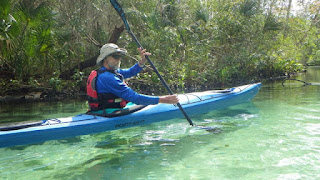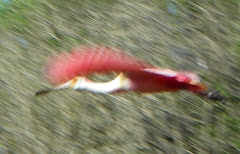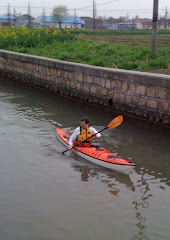Music breathes softly through the cracks between the spot welds of Ricardo Breceda’s magnificent desert sculpture as the hot breeze fills its cavernous body. In its escape, as from the bellows-filled bladder of Northumbrian pipes, the air makes music.
 |
| Ricardo Breceda's desert sculptures breathe with the breeze |
Music is not the main purpose of Breceda’s sculpture, but as
I move through the desert to stop at each massive monument I can hear the breeze
playing across the surfaces.
 |
| Heavy metal guitar, but the desert music whispers |
The sounds remind me of the diverse water songs I hear in my
more usual environment paddling kayaks and canoes. Many of these sounds I
create myself as I strive for efficiency. Maximum effect for minimum effort
plays its own tune, a different one from maximum effort with indifferent
efficiency.
 |
| An efficient stroke sounds different from an inefficient one |
There’s the rush of water when I pull too hard and my blade drags through the
water losing traction. There’s the quiet “sip” sound
when I slice my canoe blade edge-first from the water after a stroke, a sound I
hear from my wooden blade but not from my carbon one. There’s the plop of blade
entry when the trajectory is poor.
A carved turn sounds different from a skid turn, an
efficient stroke sounds different from an inefficient one. The slap of kayak
against wave subdues when I tune from out-of-sync to in-sync paddle strokes.
 |
| A skid turn sounds different from a carved turn |
When I listen I can hear these water sounds like the song between the metal
plates of the desert sculptures, but it’s easy to miss their significance when
there’s a lot going on. It's better to start listening on a quiet day.
Nigel Foster's newest book "The Art of Kayaking" explores how to get maximum effect for minimum effort, and this mantra has influenced his kayak and paddle designs.

































No comments:
Post a Comment